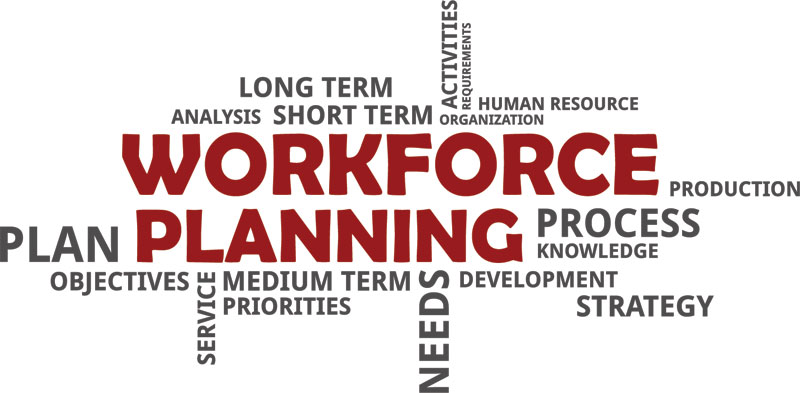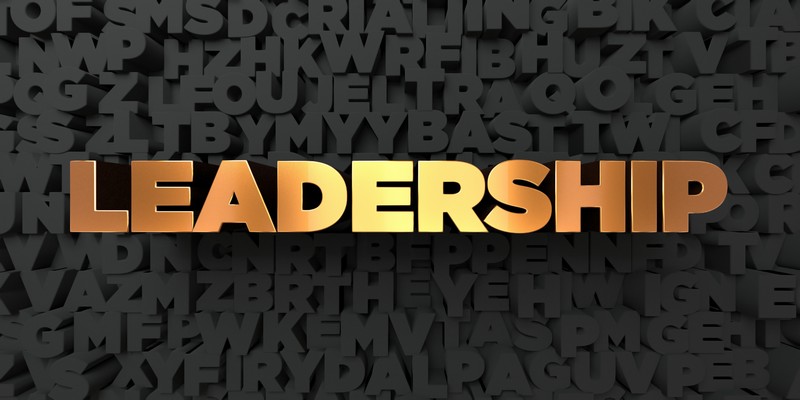Author(s): Julie Fernandez, (Information Services Group (ISG), Stamford, Connecticut, USA
It is not far-fetched to imagine a company using recruiting technology to help it find potential candidates for specific jobs. And it is not science fiction to imagine that the technology is based on machine learning, which involves identifying and repeating certain patterns and applying algorithms. Does this mean the software could, therefore, “learn” that most candidates hired come from a specific school or town? Does this encourage bias – or even profiling?
The potential for bias is certainly there, but does it have greater influence than the biases inherent in people-driven decisions?
First, it is important to recognize that human judgment as it is used today in recruiting is flawed. Even the most careful recruiter is drawn to certain nameless qualities. And, even if you ignore personal experience and bias in human recruiters, the battery of tests and selection methods available to HR teams today cannot be considered “fact-based” indicators of performance. Because so much of what enterprises mean when they talk about performance is unexplainable, they use two terms to measure how someone might contribute to the workplace:
- Performance indicators: These include sales, productivity and satisfaction metrics and attrition and promotion rates.
- Predictors: These include background/experience, test scores and interview performance.
These kinds of people analytics – also known as talent or HR analytics – can tell us a lot, and machine learning tools and techniques are evolving all the time to tell us even more. We are not far from having apps and products that can conduct sophisticated analysis to improve the speed and quality of finding and evaluating candidates for hire. No less than an army of data engineers, statisticians and dataphiles are racing to create competitive advantage in talent acquisition – better results with data-driven intelligence.
Armed in the past with little more than an applicant tracking system, are recruiters ready for the leap from being data-deprived to being artificially intelligent? For many companies, sourcing and attracting talent begins with casting a wide net and staying connected in the candidate pool. Social media channels have recently made it possible to access unprecedented volumes of data about the employment skills and experiences available in today’s workforce. The talent marketplace is exploding with software and services that aim to improve sourcing using data-driven analysis to perform candidate matches, automate rankings, short-list and pre-screen candidates. The dramatic impact to these top-of-funnel sourcing activities promise as much as 57 per cent efficiency[1] to the formerly unstructured work of narrowing down candidates, all the while yielding better quality and diversity outcomes.
Companies today are quite comfortable evaluating tools and services for the user experience, for case studies in their industry and for estimated results to justify value for a business case. Without any real data expertise, what is the likelihood that HR buyers will go the extra mile to consider the methods, biases and algorithms that statisticians and purists would consider sound and defensible enough to act upon? Embedded HR analytics begin with a foundation or parameters that establish what makes a good hire, so alignment on this foundation is critical. Beyond the basic data premise, HR should also become familiar with various techniques that are used to improve the validity of results from any predictive analysis that is being calculated and applied, including the following:
- At the top-most level, logic should identify and compare characteristics of best and worst outcomes, testing for statistical significance to focus on what is meaningful.
- Next refining the analysis to subsets of data that determine results within the same unit/group (industry, field, business, geo, etc.) and job will yield more custom results. Adding credentials and experience that are industry-specific apply to certain job types or provide deep geographic context will resonate to companies seeking competitive advantage for talent in those areas.
- Advanced methods should be used to ensure relevance and root out bias including techniques, such as regression analysis to identify and isolate certain characteristics or outside influences
- Finally, a methodology that incorporates a look-back and adjustment based on hire, attrition and promotion results can be used to bring the analytics full-circle.
Establishing rule-driven programs to identify new talent or narrow down best-fit candidates has received a great deal of attention for its potential to drive efficiency in the search. Reducing time spent by recruiters to identify a top slate of candidates accelerates the search for talent and produces quantifiable value measured in cost-per-hire and time to fill. It is easy to get excited and lose sight of the effectiveness objectives – to identify hires that are best-fit for the position and who thrive in your company’s culture.
Another top problem area that HR professionals want to use people analytics data to solve is that of employee retention, or voluntary turnover, which XpertHR’s Michael Carty asserts is the number one data priority area for HR beginning in 2018[2]. XpertHR also cites voluntary resignation rates that have risen from 8.9 per cent in 2012 to 13.1 per cent, reflecting the strengthening labor market. Separately, blogger Maren Hogen[3] paints an even starker picture for making employee retention an HR priority. Of her nine alarming employee retention statistics, four indicate that as much as a third of all employees are at risk, whether newly hired or longer-term employees:
- One-third of new hires quit their job after about six months.
- One-third (33 per cent) of employees knew whether they would stay with their company long-term after their first week.
- Some 35 per cent of employees will start looking for a job if they do not receive a pay raise in the next 12 months.
- One-third (33 per cent) of leaders at companies with 100 plus employees are currently looking for jobs – even those in senior leadership aren’t immune to leaving.
Historically, companies have used exit surveys or termination reason codes to try to describe why employees leave, but how much more effective would it be to be able to predict which employees are most likely to leave the company? Getting an early heads-up provides management a chance to act to prevent its top talent from leaving while preparing for succession or backfill. As companies look for data-driven insights that will help prevent talent loss, we are seeing a wave of provider tools from the likes of Vizier, Otipo, Deloitte and WNS that are focused on workforce retention. Still, others are waiting more patiently for their global HCM software (Workday, SuccessFactors, Oracle Cloud, etc.) to advance from dashboard HR metrics to a more robust suite of analytics as part of the integrated HR technology suite.
The appeal of plugging in and turning on a product that taps into existing source data, displays visual HR metrics, and then predicts successes and relevant outcomes is captivating. However, the tremendous swirl of HR technology innovations means there are many stages to maturing from HR data created painstakingly for one-off requests to a culture of visual HR metrics at-the ready, and then beyond to a consumer of predictive analysis available to support key HR decisions. Even the savviest of dataphiles will recognize the scrutiny that you will be met with along the way:
How much competitive advantage can you gain from a commercial package?
The newness of having and using data to inform and even predict HR outcomes is powerful and has already created a compelling call to action for HR professionals. But as commercial toolsets are built, they must anticipate data sets that will be available and relevant to reaching insights about HR turnover, recruiting, absence, performance, pay and more. You might wonder if these commercial modules can address your company’s unique employment needs with out-of-the-box algorithms or whether they are destined to become a feature that is table stakes in your HR technology roadmap. Until machine learning makes it possible for outcomes to evolve separately for each data set and problem statement, you may find your data-driven insights look and act much like that of your peers.
What can we analyze and predict without clean data, big data and concerns for data privacy?
HR has long been challenged with having and using any data or metrics at all. Only recently have global HCM systems become a reality for HR organizations with more than a few thousand employees, prompting unprecedented levels of data aggregation and cleanup. Even so, many special-purpose data sets (absence, benefits, recruiting, learning) still reside in point solutions or external data sources that may need to be linked or scrubbed for use. Supposing quality data are available, is there enough of it to ensure your outcomes will be relevant? A Wharton School Professor, Peter Cappelli, put it bluntly in the title of his article in the Harvard Business Review “There is No Such Thing as Big Data in HR[4].” Simply stated, solving HR challenges at a scale of hundreds or thousands of candidates or employees is one of the reasons that tapping into large record stores across clients or from giants like ADP is attractive. New concerns surfacing just this year question whether it will even be possible to access HR data, stored and used for analytics purposes. How do data privacy concerns impact the use of personally identifiable information (PII) with recruiting or other HR tools that use machine learning? The European General Data Protection Regulation effective May 2018, along with a host of local data privacy regulations, will bring increasing scrutiny to the rights of employers to aggregate and leverage personal data without express consent from employees and candidates.
Can I reasonably control for bias and influence that are programmed in?
This question comes at a time when social media bigshots Facebook and Twitter are being criticized for programming universal bias in their display of content and a suspicious refusal to share the underlying algorithms. In time, it may not be hard to assess whether institutional bias was present. HR professionals should take note of the issues raised by this broad example. First, the premise of bias alone is enough to cast doubt on company practices, intent and reputation which in people matters can have grave consequences. Second, there are no clear precedents for determining who is accountable, if there was intent and whether there is fault or damages. To address these perceived risks, HR professionals will want to adopt measures that mitigate the risk of unintended bias by ensuring due diligence or seeking a means to certify or protect against allegations stemming from using the output of HR analytics.
Because machine learning and artificial intelligence programs are rules-driven, they may someday be able to identify and flag bias when and if it shows up, essentially overturning human decision-making. But when, and under what circumstances, will human judgment overturn an automation result? If the automation recommends the hiring of a group of recruits who then promptly leave the company, how will humans manage the fallout? Is it defensible to de-select a number of candidates based on a model that predicts their fit and success for the position? And if predictive analytics are responsible for sweetened pay or benefits to an at-risk employee versus his/her peers, how does HR ensure it is on solid ground in equitable pay and opportunity to its broader employee base? Can employers broadly trust the outcomes of predictive tools and programs when even the largest and most resourceful tech companies falter, as was recently reported that Amazon scrapped its AI recruiting tool that showed bias against women[5].
One thing is certain – as HR departments become increasingly reliant on advanced technologies and the numbers they produce, they also will experience the need for new skillsets required to deploy and use them. It is a difficult-to-find combination that bridges technology and ethics and that can oversee the monitoring, auditing and enforcing of such automation. This is just one of several new roles arising from the adoption of a digital workplace. As HR departments race to deploy cloud technologies, robotics process automation, and HR analytics there is a growing need for a center of expertise (COE) dedicated to HR data and technology. Here, strong HR process knowledge is combined with a penchant for HR data and technology to own HR data cleansing, harmonization and maintenance, as well as oversight of any teams or providers responsible for your strategic HR technology platforms. Armed with the knowledge and inner workings of all of your best HR data sources, the HR Tech COE is an ideal place to focus resources on workforce analytics to drive business insights and recommendations.
We may be just at the beginning of the debate about tools that thrive on the use of more and more data points to make what have historically been “gut” decisions. It would be wise to get clear now about the implications of advanced analytics on recruiting and people management.






